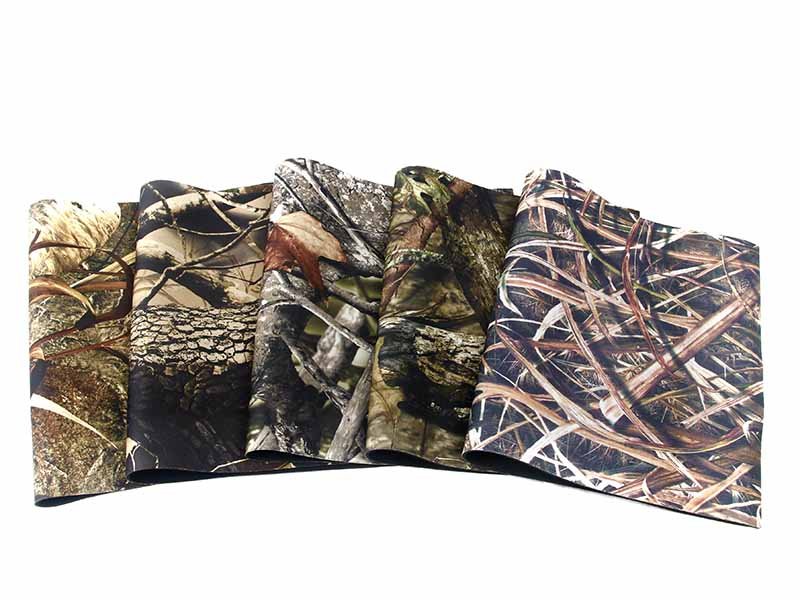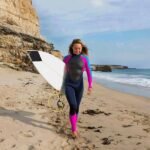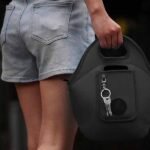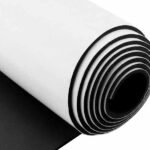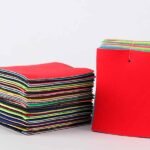In recent years, camouflage neoprene fabric has moved far beyond military uniforms and hunting gear. Today, it’s a favorite in sportswear, outdoor accessories, tactical equipment, and even fashion. Why? Because it combines the performance advantages of neoprene — flexibility, insulation, and water resistance — with the visual and functional benefits of camouflage patterns.
Camouflage neoprene fabric is a closed-cell synthetic rubber material printed or laminated with camo patterns. It’s valued for its durability, thermal insulation, water resistance, and concealment properties, making it ideal for outdoor gear, wetsuits, hunting apparel, and protective covers.
This fabric has become a “go-to” for designers who want both style and performance. Picture a wildlife photographer hiking through a wet forest — their camera lens is protected by a camouflage neoprene cover, blending into the surroundings while keeping moisture out. The fusion of form and function makes camo neoprene one of the most versatile specialty fabrics in today’s market. And if you’re sourcing it for commercial or brand use, understanding how it’s made, its variations, and its applications will help you choose the perfect product.
What Is Camouflage Neoprene Fabric and What Are Its Key Properties?
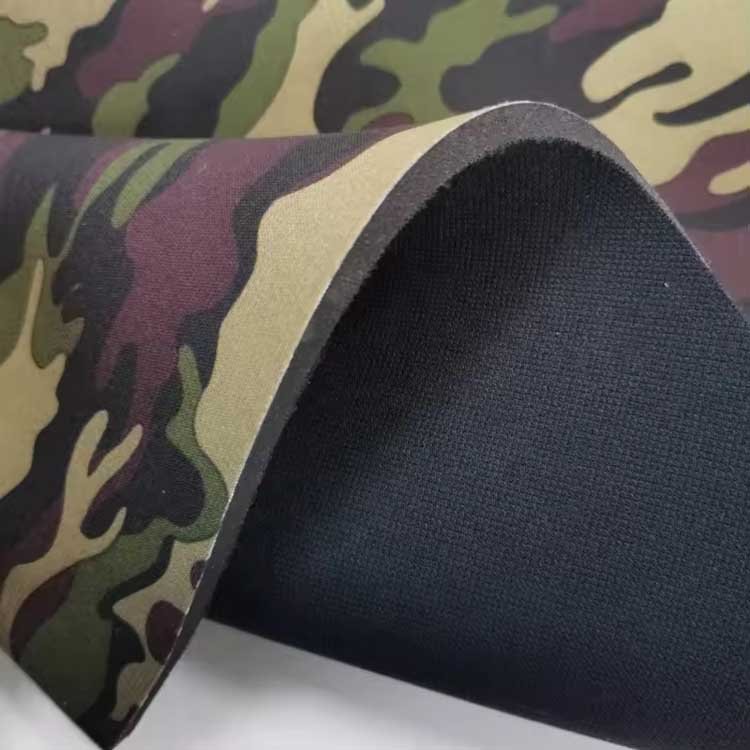
Camouflage neoprene fabric is neoprene rubber laminated or printed with camouflage patterns. It offers water resistance, insulation, flexibility, and surface durability, making it suitable for outdoor sports, hunting, and tactical gear. Its closed-cell structure traps heat and resists moisture while the camo finish provides concealment.
Understanding the Material Structure
- Base Material: Neoprene, a synthetic rubber with closed-cell foam.
- Surface Layer: Polyester, nylon, or spandex fabric laminated on one or both sides for strength and print application.
- Camouflage Pattern: Applied through sublimation printing, screen printing, or heat transfer.
Performance Benefits
- Water Resistance: Naturally repels water, ideal for wet environments.
- Thermal Insulation: Retains body heat in cold conditions.
- Stretch & Recovery: Maintains flexibility for movement.
- Abrasion Resistance: Fabric layer protects foam from wear.
- Visual Camouflage: Reduces visibility in outdoor environments.
Real-World Example
A camo neoprene wetsuit for spearfishing not only insulates the diver but also blends into the reef, reducing disturbance to marine life.
Which Industries and Products Commonly Use Camouflage Neoprene Fabric?
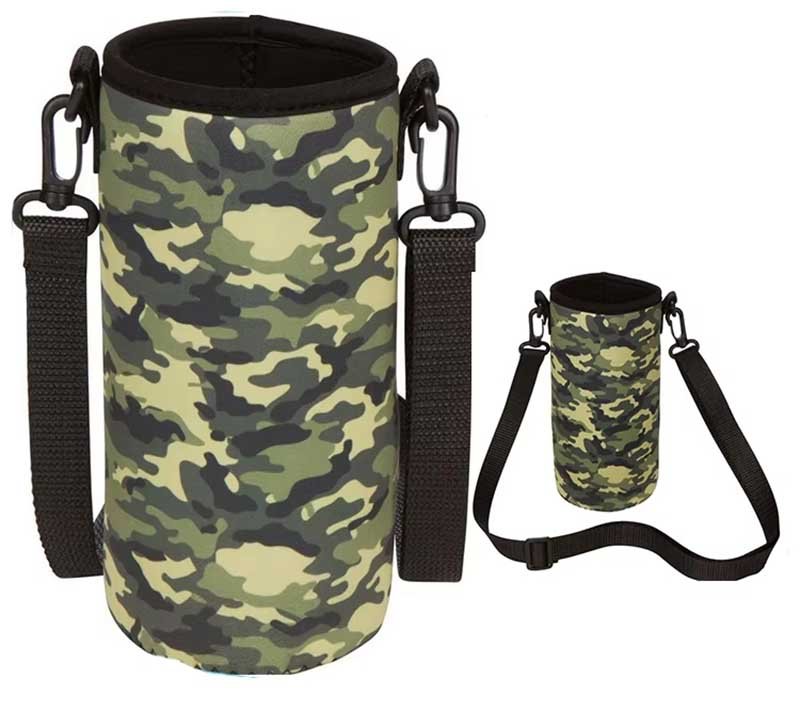
Camouflage neoprene fabric is used in wetsuits, hunting gear, tactical vests, camera lens covers, outdoor bags, sports supports, and protective cases. Industries include sportswear, military, photography, and outdoor recreation.
Outdoor & Sporting Goods
- Hunting Apparel: Jackets, gloves, face masks for concealment in forests and wetlands.
- Fishing Gear: Waders, gloves, rod cases that blend into surroundings.
- Water Sports: Surfing or diving suits with camo for aesthetics and stealth.
Tactical & Military Applications
- Load-bearing vests, pouches, and protective padding where noise reduction and camouflage matter.
Photography & Filming
- Neoprene lens covers and camera wraps that protect gear from moisture and blend with the environment.
Lifestyle & Fashion
- Camo neoprene backpacks, laptop sleeves, and streetwear for style-conscious consumers.
Industrial Uses
- Tool wraps and protective mats where durability and grip are needed.
| Industry | Product Example | Key Benefit |
|---|---|---|
| Sportswear | Camo wetsuit | Warmth + visual appeal |
| Tactical | Ammo pouch | Concealment + impact protection |
| Photography | Lens cover | Moisture resistance + camouflage |
| Lifestyle | Neoprene tote bag | Style + durability |
How Is Camouflage Neoprene Fabric Manufactured and Customized?
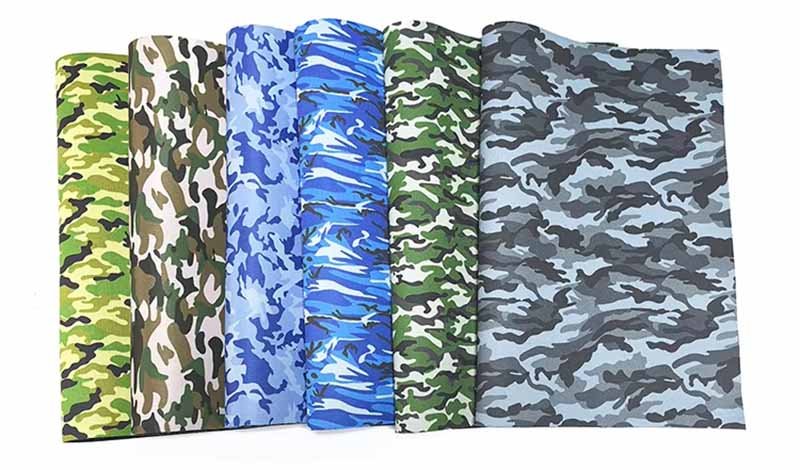
Camouflage neoprene is made by laminating printed fabric to neoprene foam or directly printing on laminated surfaces. Customization includes pattern design, thickness selection, surface fabric choice, and finishing techniques like anti-UV or waterproof coatings.
Step 1: Neoprene Foam Production
- Base Creation: Chloroprene rubber mixed with foaming agents.
- Cell Structure Control: Determines softness, insulation, and flexibility.
Step 2: Fabric Lamination
- Fabrics like nylon, polyester, or Lycra are bonded to one or both sides using heat and adhesive.
- This layer serves as the printing substrate.
Step 3: Camouflage Application
- Sublimation Printing: Produces vibrant, detailed patterns.
- Screen Printing: Ideal for bold, repetitive designs.
- Heat Transfer: Good for smaller production runs.
Step 4: Finishing Options
- Anti-UV Coating: Prevents color fading in sunlight.
- Waterproof Treatment: Enhances water repellency.
- Embossing: Adds texture for grip and style.
Customization Factors for Buyers
- Pattern Type: Digital camo, woodland, desert, or aquatic.
- Thickness: From 1 mm for covers to 7 mm for wetsuits.
- Fabric Choice: Nylon for durability, Lycra for stretch, polyester for cost-efficiency.
- MOQ & Sampling: Szoneier offers low MOQs and rapid prototyping for OEM/ODM clients.
Do All Camouflage Neoprene Fabrics Offer Waterproof and Insulating Performance?
Most camo neoprene fabrics are water-resistant and insulating due to neoprene’s closed-cell foam, but performance varies with thickness, fabric lamination, and seam construction.
Waterproofing Factors
- Neoprene’s Natural Properties: Foam resists water absorption.
- Seam Type: Blind-stitched and glued seams are most watertight.
- Fabric Layer: Dense fabrics increase water resistance.
Insulation Variables
- Thickness: Thicker neoprene retains more heat.
- Cell Size: Smaller cells improve insulation.
- Fabric Color: Darker camo retains heat better in sunlight.
| Thickness | Typical Use | Insulation Level |
|---|---|---|
| 1–2 mm | Laptop sleeves, camera covers | Low |
| 3–5 mm | Wetsuits, gloves | Medium-High |
| 6–7 mm | Deep dive suits | High |
Is Camo Neoprene Fabric Easy to Work with in Manufacturing Processes?
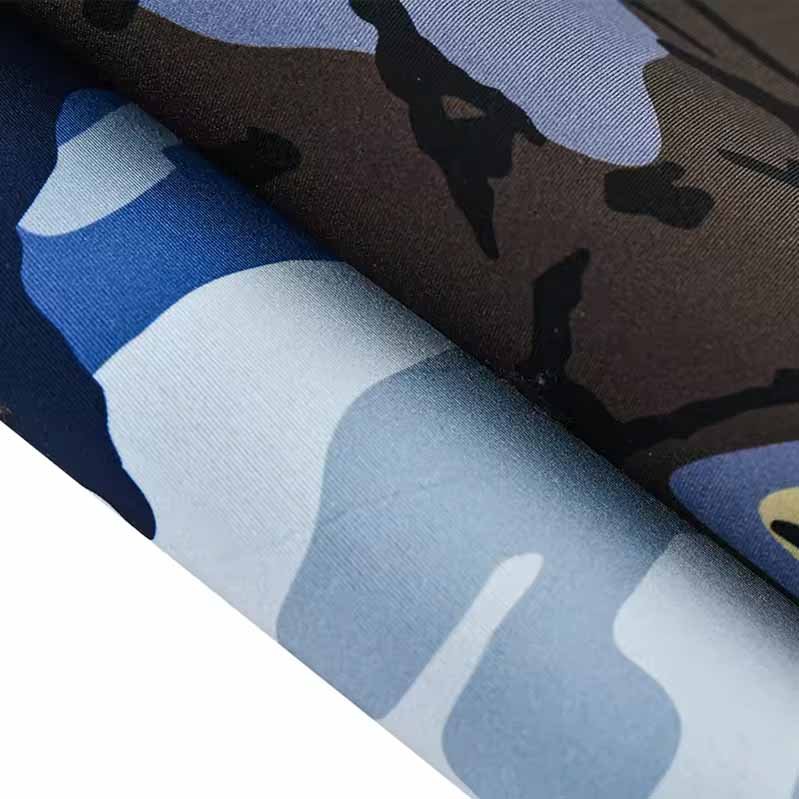
Yes, camo neoprene can be cut, sewn, or glued with the right tools. Its laminated surface prevents fraying, and edges can be finished with binding or heat sealing.
Cutting & Shaping
- Rotary cutters or die-cut machines ensure clean edges.
- Templates are used for consistent patterns.
Sewing
- Heavy-duty machines with walking foot mechanisms handle bulk.
- Nylon or polyester thread increases seam life.
Bonding
- Contact cement works for edge joining.
- Heat-sealing tapes reinforce waterproof seams.
Challenges & Solutions
- Bulkiness: Use thinner neoprene for smaller products.
- Stretch Control: Stabilize with interfacing fabrics.
Are There Different Types of Camouflage Patterns in Neoprene Fabric and Which Work Best?
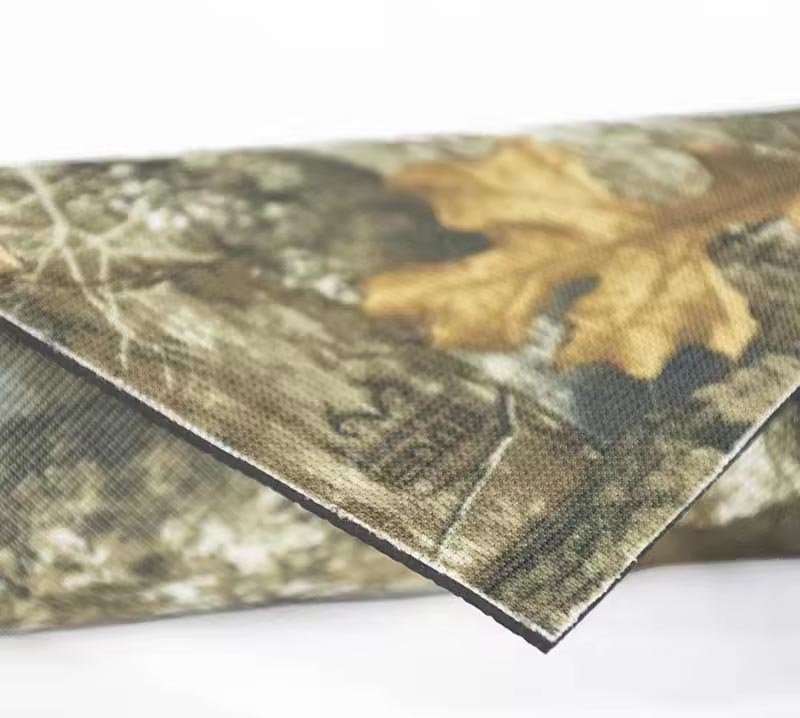
Yes. Common types include woodland, desert, digital, and aquatic camo. The best choice depends on environment — woodland for forests, desert for arid regions, aquatic for marine use.
Popular Camouflage Styles
- Woodland Camo: Green, brown, black — for forests.
- Desert Camo: Beige, tan — for sandy terrain.
- Digital Camo: Pixelated, modern military look.
- Aquatic Camo: Blues and greens — for water sports.
Pattern Selection for Products
- Hunting gear: Woodland or marsh camo.
- Spearfishing wetsuits: Aquatic camo.
- Urban fashion: Digital camo.
How Can You Choose the Right Camouflage Neoprene Fabric for Your Product or Project?
Select camo neoprene based on product function, environment, thickness needs, and customization options. Consider supplier experience and MOQ flexibility for brand projects.
Step-by-Step Selection Guide
- Define Use Case: Outdoor gear, sportswear, lifestyle accessories.
- Pick Pattern: Match the environment or brand style.
- Choose Thickness & Fabric: Balance protection, weight, and comfort.
- Verify Supplier Capability: OEM/ODM services, sampling speed, QC process.
Buyer Pro Tip
Working with an experienced manufacturer like Szoneier ensures not only quality materials but also guidance on matching technical specs to your target market.
Conclusion
Camouflage neoprene fabric combines technical performance with aesthetic versatility, making it a top choice for brands in outdoor, sports, tactical, and lifestyle markets. From waterproof wetsuits to rugged camera covers, the right camo neoprene enhances product function and visual appeal.
Szoneier has over 18 years of experience in neoprene R&D, manufacturing, and customization. We offer:
- OEM/ODM services with your logo and pattern.
- Low MOQs for small to mid-scale orders.
- Free design and sampling.
- Fast delivery and strict QC.
📩 Email: manager@neoprene-bag.com
📞 Phone: +86 13423847456
🌐 Website: www.neoprene-bag.com
Bring your camouflage neoprene product ideas to life — contact us today for a tailored solution.

